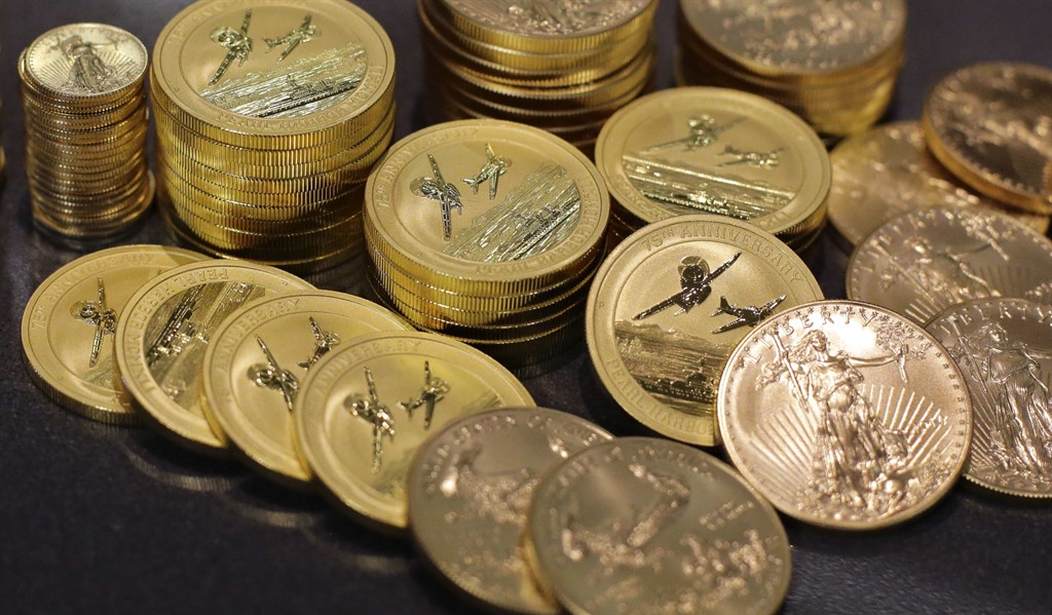Inflation is heating up again, which is good for gold and silver, and that is nowhere more evident than in the Tooth Fairy index. According to the Original Tooth Fairy Poll, sponsored by Delta Dental, the average parental payout for a tooth under the pillow rose from $3.91 in 2015 to $4.66 in 2016, a gain of 19.2%. Cash payouts for a child’s first lost tooth, typically higher than average, are also up nearly 10%, at $5.72. This is a scientific poll, not just a random survey of a few parents in your neighborhood. During the week of January 24-31, Delta Dental contacted 1,588 parents of children ages 6-12. The resulting margin of error is only +/- 2.5 percent.
This poll also reflects a rise in disposable income among families, a general sign of rising incomes. By region, Tooth Fairy payouts were the highest in the West: $5.96 ($6.89 for the first tooth); followed by the Northeast at $5.08 ($6.31); the South at $4.57 ($4.88); and the Midwest at $4.04 ($5.70).
Inflation is Rising Elsewhere, Too
Inflation is finally returning after five dormant years, and that is good for gold and silver, which are historically bought more in times of rising inflation than low inflation. James Luke, commodities fund manager at UK’s Schroeders, one of the leading investment firms in the world, said last week that “The primary reason for investing in commodities, and especially gold and silver, should always be as an inflation hedge. Given the printing of money by the world’s central banks through quantitative easing, there is every reason to argue that higher inflation is coming in the future.” Luke also said that “gold and silver investments in particular remain very under-owned,” so there is plenty of room for significant increases when more of the world’s population can afford gold and see the value in owning some gold.
Recommended
Luke also said: “Given investors’ high exposure to the traditional asset classes, there is an urgent need to find uncorrelated and attractive alternative investments. Liquid and tangible portfolio diversification options are limited, making gold and gold-related investments unique and of use to all investors.”
Gold Rises Above 200 – Day Moving Price Average
Gold rose $15 on Friday after the U.S. bombed an air base in Syria and launched a U.S. Navy carrier-led strike force group toward North Korean waters in the wake of their recent missile launches. All this was timed to occur just as President Trump planned to meet Chinese President Xi Jinping in Mar-a-Lago, Florida. Gold has now risen for four straight weeks, reaching a five-month high. On Friday, gold rose above its 200-day moving price average, an important technical indicator showing long-term strength.
Silver is Best-Performing Commodity in First Quarter… Again
Overall, commodities declined in the first quarter, but the precious metals all gained ground. The widely-watched CRB Commodity Index declined 3.44% in the first quarter. The public’s eyes are mostly glued on crude oil, which fell 5.8%; natural gas fell 13.4%. In the precious metals group, though, gold rose 8.6% and platinum gained 5.2%, while silver was the top-performing commodity of all of the 21 commodities tracked by FactSet, rising 14.2% in the first quarter. Here are the top four and bottom four commodities:

For the full year of 2016, gold rose 9.1% while silver gained almost twice that amount, 17.5%. Putting 2016 together with the first quarter of 2017, silver is up 34.2% since January 1, 2016 and gold is +18.5%.
Over longer periods of time, gold outperforms silver, but when gold is rising silver tends to outperform gold. In this sense, silver acts like “gold on steroids,” but investors must also be aware that silver will likely go down faster than gold when gold prices decline. Over the last 50 years, gold has risen 35-fold (from $35 to $1,250), while silver is up only 14-fold (from $1.29 to $18.00). The same is true in the table we print here in the Metals Report. Since January 1, 2000, gold is up 332% and silver is up less, +237%.
The Pogue Auction Concluded Last Month
Fox Business, Reuters, Associated Press and other major news outlets were abuzz with the news of the record setting Pogue sale.
One of America’s most important early silver dollars, the Dexter specimen 1804 silver dollar PCGS Proof-65 from the collection of D. Brent Pogue, fetched almost $3.3 million dollars as part of a record-breaking coin collection auction last month. The five-part sale of the Pogue collection ended March 31, 2017 with a total sales amount of almost $106.7 million.
In addition, two small-denomination coins sold for almost $1 million – an 1811 half-cent PCGS MS-66 RB brought $998,750, and a 1793 Liberty Cap cent PCGS AU-58 sold for $940,000, making the 1793 cent the most valuable circulated cent ever sold. Both of these coins sold for far more than what experts estimated they would bring.
Record-setting auctions often raise the interest of the collecting and investing public in buying rare coins which can appreciate over time. Great rarities selling for large amounts with broad media coverage bodes well for the overall coin market. Experts see this as a sign of big money being ready to enter the market which would benefit collectors and investors. Brent Pogue began collecting in the early 1970s as a teenager. Those starting out at a young age now have a chance to replicate these results. Older investors can also use their accumulated wealth to start a grand-child collecting coins for long-term wealth accumulation, as well as a wonderful way to learn American history and the value of gold and silver compared to paper money.
On April 2, 1792 – 225 years ago – the U.S. Congress passed the Coinage Act, which launched the U.S. Mint and Thomas Jefferson’s new decimal-based currency system, based on gold and silver. The Coinage Act authorized building the first Mint in America’s capital, Philadelphia. President George Washington soon named a top astronomer and mathematician, David Rittenhouse, as the Mint’s first Director. The first silver dollars were struck by the U. S. Mint in 1794.


























Join the conversation as a VIP Member